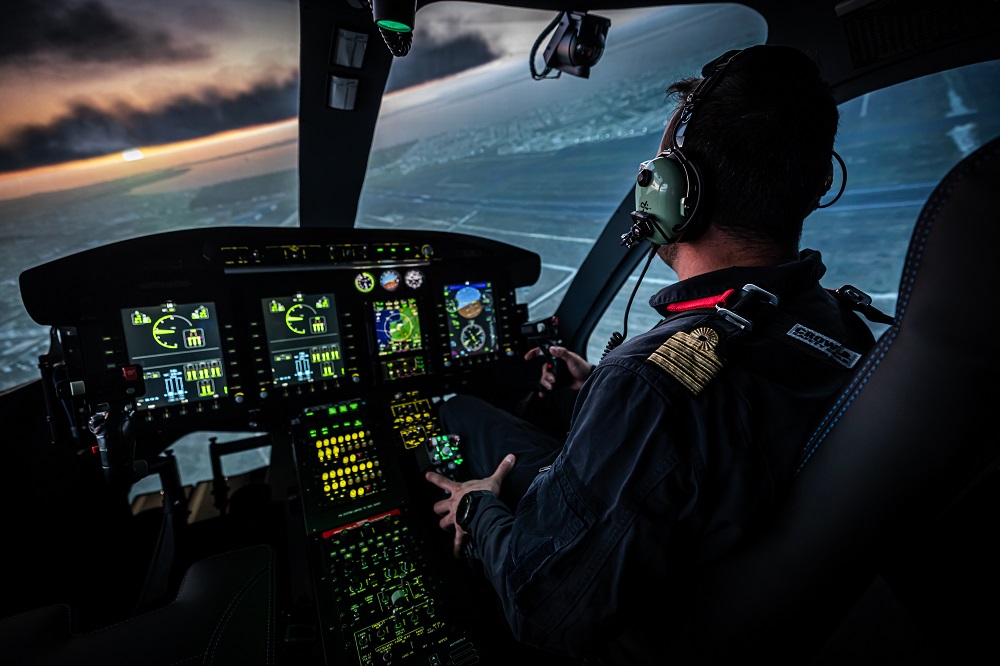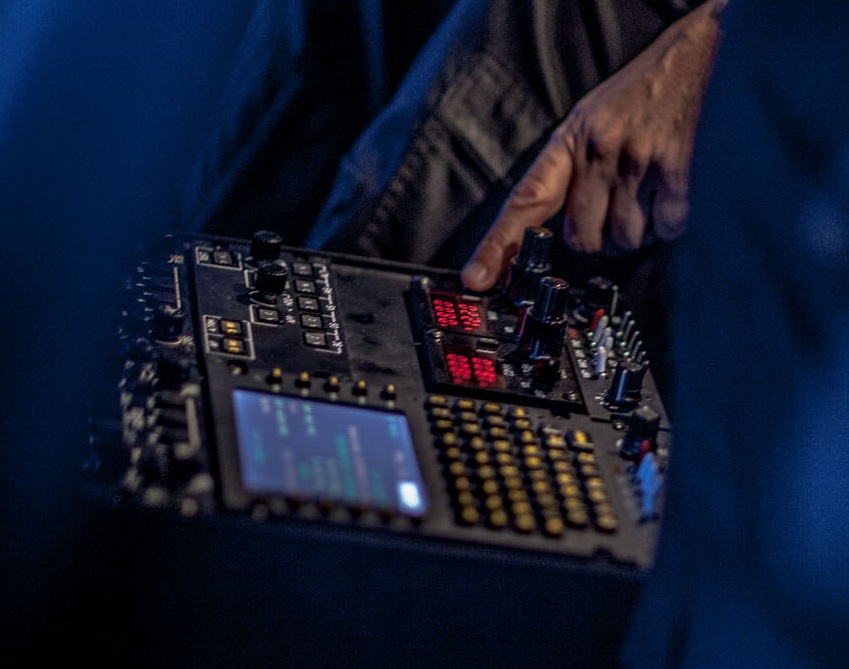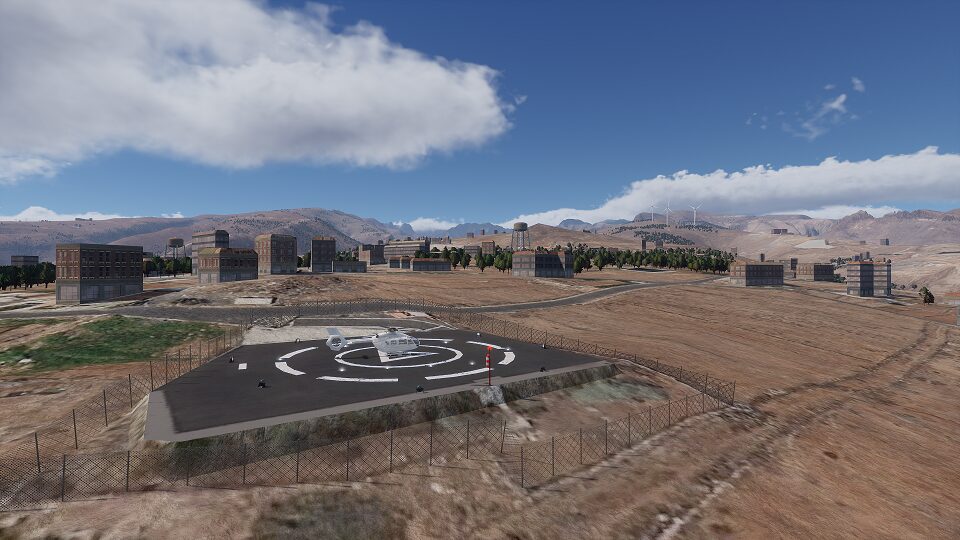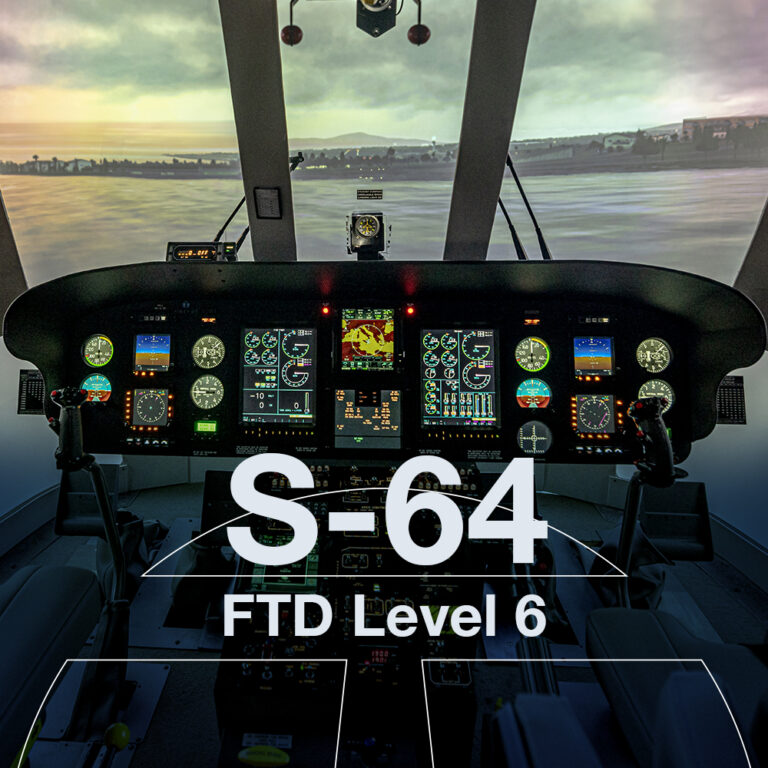
Helicopter flight is fundamentally different from that of an airplane. While a plane typically flies from point A to point B, a helicopter pilot on a Search and Rescue (SAR), firefighting, or HEMS mission often knows their departure point, but not where the emergency will ultimately take them. Their flight is dynamic, visual, and above all, unpredictable.
This unpredictability demands an exceptional level of preparation. Pilots must be ready to react to any contingency in high-risk environments. This is where helicopter simulators become the most crucial training tool. In this article, we explore how simulators prepare pilots for the most critical emergencies, forging the most important skill of all: decision-making under pressure.
Replicating the unpredictable: scenarios for critical missions
Unlike planned routes, helicopter emergency missions adapt to situations that change in real-time. A forest fire spreads, an injured person is in a hard-to-reach location, or weather conditions suddenly worsen. Helicopter simulators allow crews to train in these fluid contexts, preparing them for the reactive nature of their work.
This goes beyond simply practicing a maneuver; it’s about training the pilot’s ability to adapt. For example, in the simulator, an instructor can:
- Alter a firefighting mission mid-flight: a mission can be dynamically altered by one of the most unpredictable elements: the wind. In the simulator, the instructor can change the wind’s direction and speed mid-flight. As a result, the fire’s behavior changes, and it may no longer be advancing as predicted. The pilot must then immediately re-evaluate the situation, communicate with the ground commander, and fly to a new, more effective drop zone for the water or retardant, all while managing the aircraft’s performance in the changing conditions.
- Create dynamic Search and Rescue (SAR) scenarios: a mission to rescue a hiker might begin with imprecise or outdated coordinates. In this case, the challenge isn’t a physical obstacle, but a lack of information. The simulator allows the crew to practice shifting from a transit flight to an active search pattern, using visual scanning techniques to spot signals like a mirror flash, colored clothing, or a makeshift sign on the ground. This hones the crew’s observation skills and their ability to interpret subtle environmental cues, a critical skill when every second counts.
- Introduce unexpected complications in HEMS flights: a pilot flying a patient to a specific hospital could suddenly face deteriorating weather conditions along the planned route or receive an update that the hospital’s helipad is now unavailable. The simulator allows them to practice the entire decision-making process of diverting to an alternate hospital, recalculating fuel, and managing the mission under extreme time pressure.
This ability to train for a “plan B” in a controlled environment is what builds truly resilient and resourceful pilots, capable of managing the inherent unpredictability of their missions.
Building resilience: key skills practiced in the simulator
A high-fidelity simulator goes far beyond basic flight practice. It is a laboratory where pilots can isolate and master every aspect of an emergency operation.

1. Mastering critical failures in complete safety
There are failures that, for safety reasons, are impossible to replicate in a real aircraft. A simulator is the only place where a pilot can practice an engine failure requiring autorotation, a loss of tail rotor effectiveness, or a hydraulic failure in a critical phase of flight to perfection. This practice turns emergency procedures into an automatic, instinctive response.
2. Battling the elements: adverse weather training
The instructor can generate the worst weather conditions at the touch of a button. This goes beyond managing turbulence; it’s about preparing for the critical challenge of losing visual references in fog, clouds, or heavy rain. This is where pilot familiarization with instrumental flight (IFR) becomes paramount. In the simulator, a pilot can safely experience an inadvertent entry into IIMC, learning to combat spatial disorientation by relying solely on their instruments to navigate and fly the aircraft safely—a life-saving skill that is impossible to practice with this level of risk in a real helicopter.

3. Practicing mission-specific skills
Training in a simulator is entirely applied. For example, firefighting teams don’t just practice the physical act of a water drop; they rehearse the entire operational loop. This includes communicating with a ground commander for drop coordinates, coordinating with other aircraft in the area, and then executing the maneuver while feeling how the drastic change in weight affects the helicopter’s handling. In the same way, rescue crews can perfect hoist phraseology and non-verbal communication, all key aspects of Crew Resource Management (CRM).
4.Tailor-made operational training
Current technology allows for the creation of a replica of your own operation. This means you can train in a visual database that is a digital twin of your work area, with your operational procedures and most common scenarios, ensuring that every minute of training is 100% relevant to your missions.

The ultimate goal: fostering quick decision-making
The sum of all this training has one ultimate goal: to improve the pilot’s ability to make quick, accurate decisions under extreme stress. The true value of helicopter simulators lies in the instructor’s ability to introduce spontaneous failures and contingencies.
This prevents the pilot from simply memorizing a sequence and forces them to analyze the situation, prioritize actions, and execute an effective solution, fostering the mental agility and decisiveness that save lives in the real world.
At entrol, we design our Helicopter Simulators with the philosophy that training must be as realistic and unpredictable as the mission itself. We believe that preparing pilots for the worst possible day is the most effective way to ensure they always return home safely.



